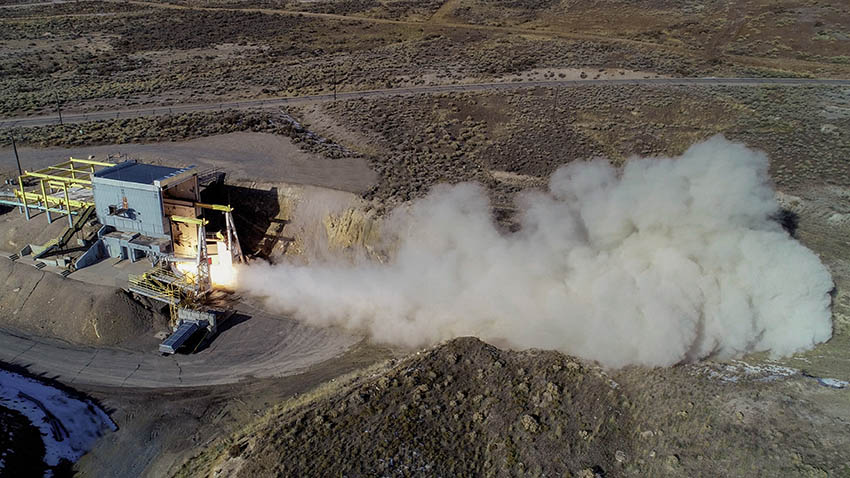The Low-Risk Path for Never-Fail Missions
Leveraging decades of solid rocket motor expertise to defeat evolving threats
US, March 27. The history of American military propulsion dates back to the Wright brothers themselves, whose company built the first six-cylinder engine used by the US Army Signal Corps in flight. More than a century later, propulsion remains an essential element of the nation’s missile defense capabilities.

Mission-critical national security and defense programs require solid rocket motors (SRMs), and Northrop Grumman has been using advanced technologies to deliver flight-proven propulsion for over six decades. This technology plays a pivotal role in powering a wide array of systems, propelling everything from air-launched missiles, heavy-lift rockets and cutting-edge hypersonics. Unlike liquid propellant, solid fuel allows missiles to be stored for long periods of time, ready for launch. This stability enhances the safety and ease of handling during transportation, storage and deployment.
The agility and operational reliability to deploy at a moment’s notice offers a strategic advantage that is indispensable to the mission.
“Modernizing rocket propellant and motor production is not just a matter of making technological upgrades and increasing production capacity — it is an urgent national security imperative,” said Wendy Williams, vice president and general manager, launch and missile defense systems, Northrop Grumman.
When the United States began to operationalize its missile defense system in the early 2000s, it was focused on dealing with a small number of long-range missiles that could be acquired by a limited number of actors. Today, the threat landscape is vastly more complex and unpredictable.
Earlier this year, John D. Hill, deputy assistant secretary of defense for space and missile defense, testified before Congress, saying “missiles have become foundational to our adversaries’ way of war, and missile defense has become foundational to integrated deterrence and defense of the nation.”
At the same time, America is fielding its own missile capabilities, and Northrop Grumman propulsion is a powerful national asset in providing smarter, more survivable and lethal weapons, delivered rapidly and affordably. Both missile defense launch vehicles and missiles themselves are powered by SRM propulsion, with missiles utilizing smaller SRMs. Decades of Northrop Grumman proprietary propulsion mix and cast techniques are shared between the two capabilities.
In the coming years, SRM technology will need to be deployed on an unprecedented scope and scale. As a company building some of the world’s largest and most advanced solid rocket motors, Northrop Grumman has a resilient and diversified supply chain supported with cutting-edge additive manufacturing techniques. Lead times will need to get shorter, and cost-effectiveness will be paramount. Executing with speed, safety and discipline is crucial, which is why the company continues to invest in technology, doubling our energetics capacity by 2026, and facility expansion to deliver the capabilities its customers need now to respond to growing threats.
This is all vital to the success of “can’t-fail” next-generation systems that will destroy adversary hypersonic missiles, upgrade the homeland missile defense system to counter increasingly complex intercontinental ballistic missile threats and propel our missiles faster and farther than ever before.
Northrop Grumman has the verified expertise and historical track record to meet a massive propulsion challenge and equip our country’s large-scale, next-generation military programs. The company’s tip-to-tail missile integration and missile defense expertise have demonstrated proven performance and delivery in propulsion that is essential for this mission-critical capability.
Just as the Wright Brothers did in their time, Northrop Grumman is redefining possible for the potential of propulsion.





